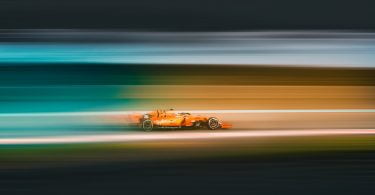Ask any fan or driver which of the twenty tracks on the 2012 Formula One calendar is their favourite, and you will be returned an almost unanimous answer: Spa-Francorchamps, Belgium.
Ask any fan or driver which of the twenty tracks on the 2012 Formula One calendar is their favourite, and you will be returned an almost unanimous answer: Spa-Francorchamps, Belgium. The circuit on which the season gets underway again after its mid-season break has been around in one guise or another since 1920, and has borne witness to some of the sport’s greatest moments.
Masta Kink at Spa
Like almost all other circuits of that era, the first Spa layout was constructed on public roads. The roughly triangular course swept through the Ardennes forest (as the modern track still does) and through the towns of Spa, Malmedy and Stavelot. This immense track stretched for over nine miles (while the average track today is just over three) and average speeds were one of the highest drivers encountered. In fact, the Belgian owners were so proud of the speeds which cars could reach on their circuit, that they removed a slow hairpin and replaced it with the now infamous Eau Rouge corner. This right-left flick draped over a steep incline is now taken flat-out in a contemporary F1 car, but it has retained the respect which drivers must show it to make it through unscathed.
However, the scariest corner on this original layout was the Masta Kink. Cars would reach this fearsome section at top speed after the long run from the town of Malmedy. Whilst on a map it appears as a relatively simple left-right chicane, in reality it required bravery even to attempt to wrestle a Formula One car through at full speed. Even legendary champion Jackie Stewart fell foul of the Kink, crashing during the race in 1966. Such were the safety precautions taken – or rather, not taken, his car ended up in the cellar of a farmhouse, upside-down and with fuel gushing out onto the Scot. To make matters worse, he was trapped inside his car and help did not reach him for a good few minutes. Stewart survived the crash, and vowed to improve the safety of not just Spa but all circuits in Formula One. As a result Spa was toned down and eventually has given us the circuit which remains a favourite today.
[video:https://youtu.be/4oB1FBplQJI]It is perhaps so loved because of the bravery and skill required of a driver to deliver a fast lap time – and the result if he gets it wrong. A sickening crash for Luciano Burti in 2001 reminded the motor racing fraternity that Spa was still a dangerous circuit, and even current double-world champion Sebastian Vettel has had trouble there – in 2006 when he was still in F3, the young driver was hit by flying debris which almost ended his racing career.
The weather
However, possibly Spa’s most famous factor above all is its local weather. Being situated in the middle of a forest among undulating terrain, weather radar is notoriously unreliable for the track. Weather pockets can bubble up so localised that at one side of the track there can be torrential rain, whilst the opposite side is bone dry. Not only does this create headaches for the drivers and strategists, it produced phenomenal racing for fans, who know that the Belgian track will not disappoint.








